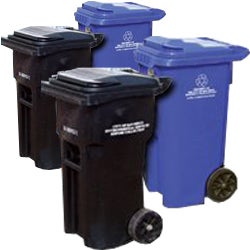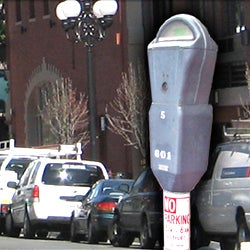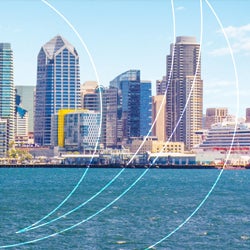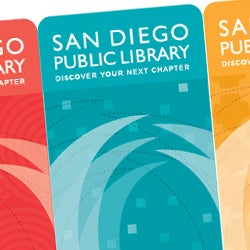Inspection Services
The Fire Inspection Program is the backbone of fire prevention in the City. The majority of inspections performed in the City are done by the engine and truck company personnel.
The Area Advisor is responsible for overseeing the engine and truck company inspections. The Advisor is the liaison between the fire company and the customer when the customer has a question or needs help in arranging an inspection time. You can reach the Advisor for a particular area at 619-533-4388.
Inspections performed yearly include public assemblies (places where more than 49 people gather), schools, day-care facilities, residential care facilities, multiple-unit residential buildings, nursing homes and other institutional facilities. State law requires an annual inspection of multiple-unit residential buildings and of schools.
High Rise Program
The High Rise program concentrates on tall buildings which measure more than 75 feet from the lowest level of fire department vehicle access to the floor level of the highest occupied floor. High rise buildings are unique because their vertical construction inherently puts people at risk in the event of a fire. For this reason, building construction and fire protection requirements are more stringent than for many other types of buildings.
The City of San Diego has more than 200 high-rise buildings. All are required to have a yearly fire inspection which is performed by the Community Risk Reduction Division.
Take a High Rise Inspection Photo Tour of a high rise building's safety features and see what equipment and planning are implemented for public safety.
Licensed Facility Inspections
This fire inspection is required for a license and is performed by a Fire Inspector in Community Risk Reduction (CRR).
State Fire Marshal Fire Safety Inspection Request
Facilities licensed by the Department of Health, Department of Social Services and Community Care Licensing are required to have a fire clearance inspection in order to be licensed. A request for an inspection (STD850) is routed to CRR from various agencies. CRR does not accept requests from citizens.
Pre-Inspection
It is recommended that facilities licensed by Community Care Licensing request a pre-inspection prior to requesting a fire clearance. The pre-inspection will provide information about building and fire code requirements which must be met to become a licensed facility. Privately owned, single family residences are eligible for this service. Commercial properties, clinics, drug treatment facilities, etc. may hire a consultant, architect, or other qualified resource.
Request a Pre-Inspection:
- A Pre-Inspection application must be completed.
- A check made payable to the "City Treasurer" must accompany the completed Pre-Inspection application and mailed to the address below:
Other Licensed Facilities
Other facilities may require a fire inspection in order to obtain or maintain a license. This request will be made directly by the facility to the Community Risk Reduction Division. These may include group care facilities licensed by the Department of Alcohol and Drug Programs, non-public schools and agencies licensed by the Department of Education and other programs licensed by the County.
For these licenses, a Special Survey application is required and a fee is incurred.
Request a Special Survey:
- A Special Survey application must be completed.
- A check made payable to the "City Treasurer" must accompany the completed Special Survey application and mailed to the address below:
Inspection Checklists
The checklists and videos below provide detailed information to business owners and occupants so they can keep their occupancies code compliant and be prepared for annual inspections.
Checklists and Videos
Group A -- Group A occupancies are for the gathering together of people. The type of gathering determines the sub-occupancy. Read and print the A Occupancy Check List and view the video.
Groups B, F, M and S -- B occupancies are Businesses; F are Factories; M Mercantile and S are Storage facilities. Read and print the B, F, M, S Checklist and view the video.
Group E -- Group E occupancies are buildings used for educating children through the 12th grade. Read and print the E Occupancies Checklist and view the video.
Fire Alarm Systems -- This overview will provide basic regulatory information to assist in identifying alarm systems' functions and discrepancies. Read and print the Fire Alarm Systems and Equipment Checklist and view the video.
Fire Sprinkler Systems -- This overview will provide basic regulatory information to assist in identifying sprinkler systems' functions and discrepancies. Read and print the Fire Sprinkler Systems and Equipment Checklist and view the video.
Group R1 and R2 -- Group R1 occupancies house residents temporarily (hotels, boarding houses for instance) and R2 occupancies have permanent residents (apartments, dormitories, fraternities for instance). Read and print the R-1 & R-2 Checklist and view the video.
Group R-3.1 -- Group R-3.1 occupancies are 24-hour residential care facilities. Read and print the R3.1 Checklist & California Fire Codes and view the video.
Group R-2.1, R-4 and I-2 -- Group R-2.1, R-4 and I-2 occupancies are Residential care facilities. R-2.1 are assisted living facilities with more than 6 non-ambulatory residents. R-4 are assisted living facilities with a maximum of six non-ambulatory residents. I-2 are facilities like hospitals and nursing homes where the residents are bedridden. Read and print the R-2.1, R-4 and I-2 Occupancies Checklist and view the video.
Group I-4 and E Day Care -- Group I-4 are day care facilities, not in a private home, where the clients are not able to respond to emergencies by themselves. E Day care are facilities, not in a private home, where the clients are older than 2 and physically able to respond to emergencies. Read and print the I-4 and E Day Care Checklist and view the video.
Group R-3 Daycare -- Group R-3 are large family day care occupancies; residential homes in which care is provided for 14 or fewer children in the providers own home for less than 24 hours. Read and print the R3 Large Family Day Care Checklist and view the video.























